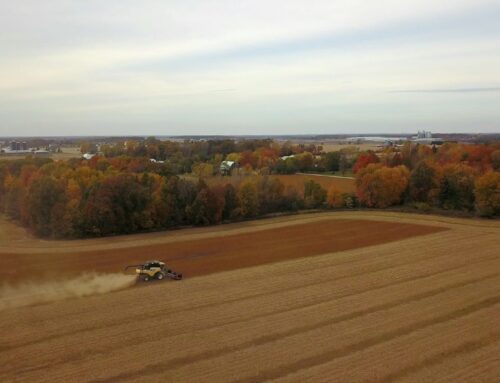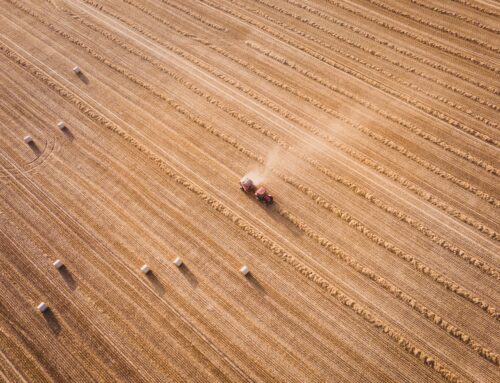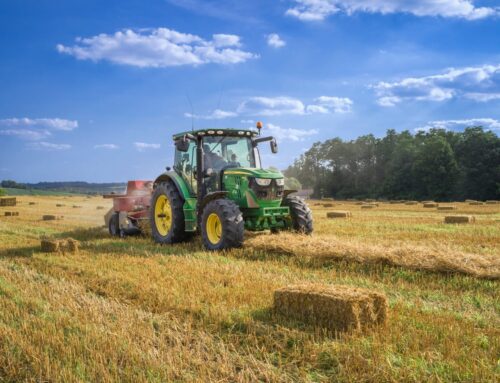We finally know more details for USDA purchases under the Food Purchase and Distribution Program portion of the $12 billion in hush money announced by the Trump Administration on July 24.
Frozen blueberries (both wild and highbush) were the first product out of the gate on September 4, with pre-solicitation announcements for 25 other agricultural commodities announced on September 7 and 11.
Yes, they released an announcement for a future announcement. So meta. But we digress.
As of September 12, purchase details on apricots, macadamia, and sweet corn have not been announced. But hey, just wait. Because the plan all along was to apparently anticipate offering more cash at the taxpayer’s expense to defray utterly predictable damage to producers staring at markets lost for the foreseeable future.
All the things in USDA’s shopping cart
A quick refresher on the Trump Administration’s foray into replacing trade with government aid:
- On July 24 USDA announced plans to direct $12 billion in unbudgeted spending to offset financial losses agricultural businesses have experienced due to the Trump Administration’s trade war.
- On September 4 USDA announced payment rates for the first $6 billion, with more coming if necessary. To be specific, here’s the breakdown:
- $4.7 billion for the Market Facilitation Program – for direct cash payments to producers of cotton, corn, soybeans, sorghum, wheat, dairy (milk), and hogs impacted by the trade war,
- $1.2 billion for the Food Purchase and Distribution Program to have the government purchase 31 “excess” commodities affected by Trump’s trade war and distribute to various nutrition assistance programs, and
- $200 million on an Agricultural Trade Promotion program to identify and access new markets.
This is apparently better than avoiding the situation to start with by not closing markets in a trade war. And now USDA is starting to announce what exactly it wants to buy under the Food Purchase program. Short answer – it’s likely more than they planned.
Pork. Lots of Pork.
USDA’s original press release stated it has set aside $1.2 billion for the targeted spending amount, but that figure now looks to be $1.23 billion – although this amount does not include purchases of apricots ($200,000), macadamia ($7.7 million), and sweet corn ($2.4 million). In addition, USDA is still working out details on how to direct subsidies to producers of almonds and sweet cherries, both of which rejected USDA efforts to purchase $63.3 million and $111.5 million worth of products, arguing instead for a program more akin to the direct cash payments for crops like soybeans and cotton. But large as they are, those numbers are dwarfed by pork. Because the largest amount of purchases are for “pork” products – reaching an anticipated $558,815,000. That’s right, half a billion, and change.
Pork was hit pretty hard by retaliatory tariffs from Mexico and China. Last year, Mexico and China were the first and second largest markets for U.S. pork by volume (1.768 billion pounds and 1.09 billion pounds) and the second and third largest markets by sales ($1.514 billion and $1.078 billion). This first round of pork payments includes eight specific products: pork patties, pulled pork, frozen ham, sliced ham, pork chops, pork loin, pork taco filling, and canned pork. Yum.
Details, please.
Plenty more announcements detailing many more specific products are likely to follow. Each announcement says “Products to be procured include but are not limited to”. Some items provided very little information on what exactly was being purchased. For example, dry peas – what kind? All kinds of peas out there. Other items are pretty specific, such as potato products being purchased, which include White Dehydrated Flakes, 5 pound bags of fresh white potatoes, 50 pound bags of russet, and cans of sliced white potatoes—also yum? Interestingly, fluid milk (half-gallon or gallon) will be one of the dairy products purchased and distributed through the program, even though Secretary of Ag Perdue already announced the purchase of $50 million worth of fluid milk through a separate pot of funds. But then USDA has a long history of lapping up “excess” dairy products, so that particular bit is not a big surprise.
The story, as they say, is developing. And we’re not taking our eye off the ball. Especially with the lack of specifics – really, what kind of dry peas? – which all come at the taxpayer’s expense. Bookmark our trade tracker (and farm bill rolling analysis, for good measure) for ongoing analysis whenever USDA announces that they need to add even more items to their taxpayer-funded shopping cart.











Get Social